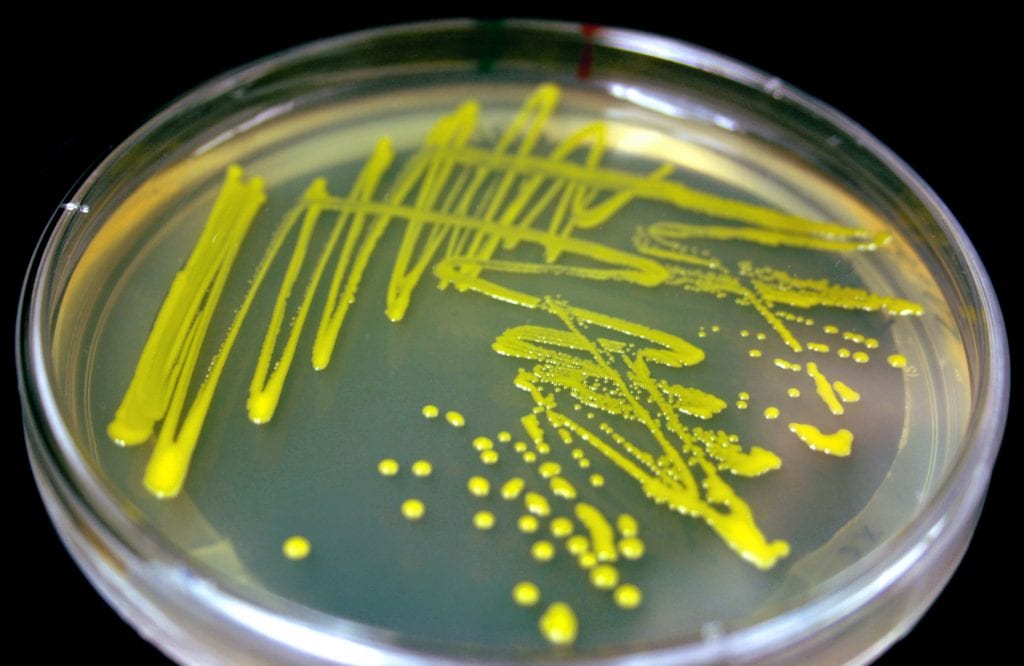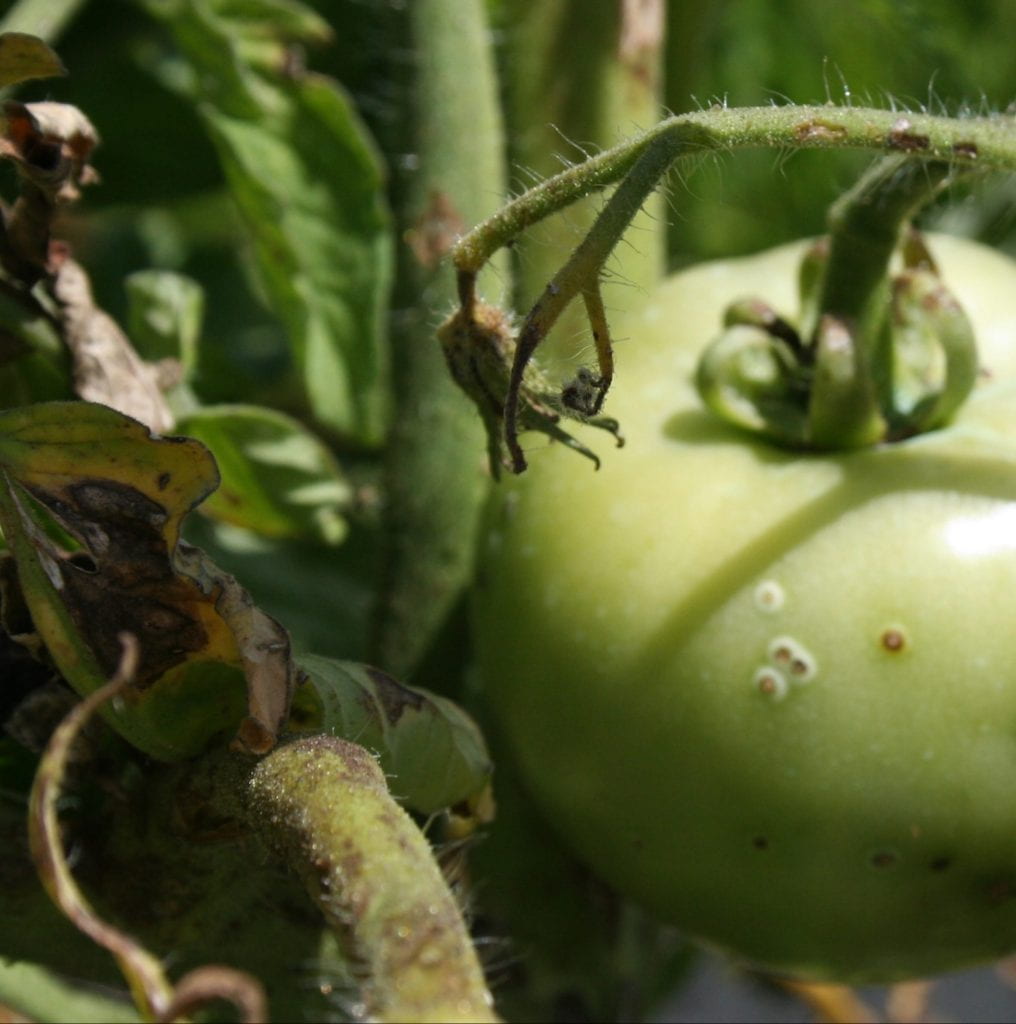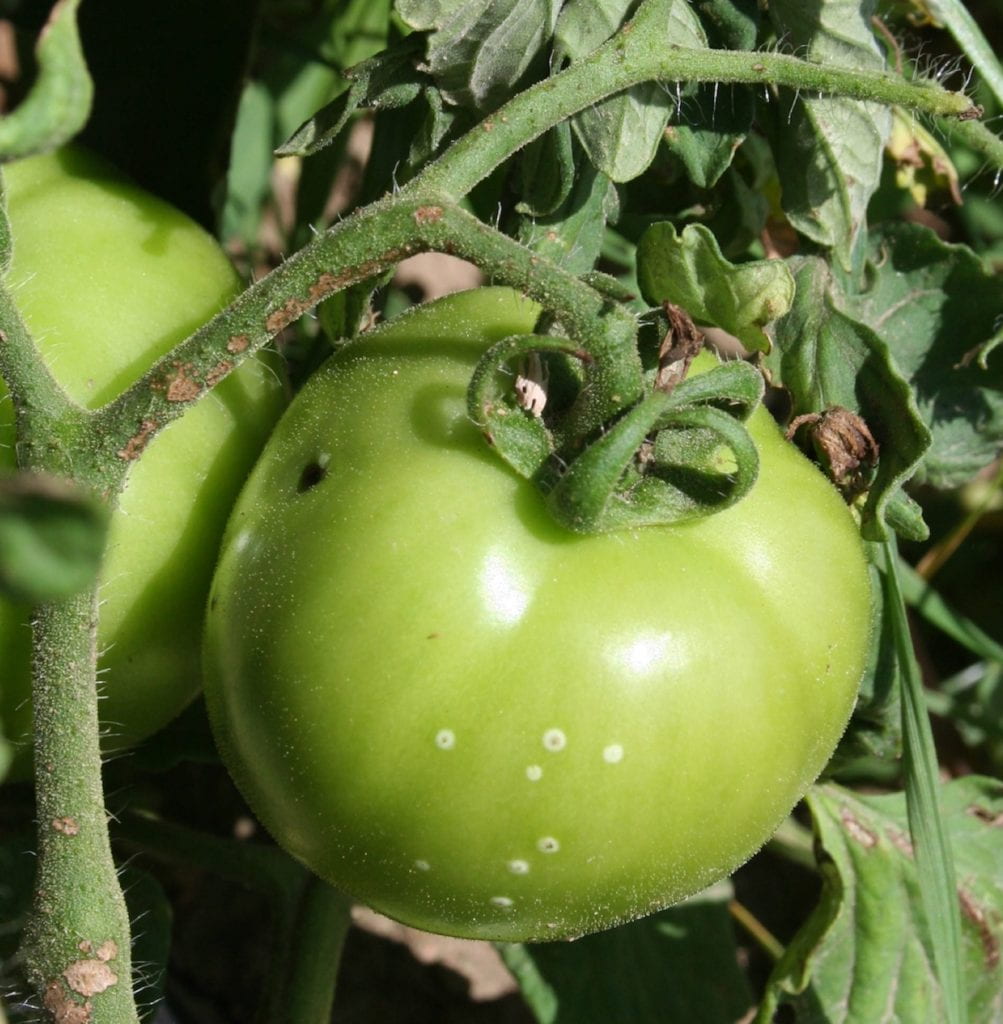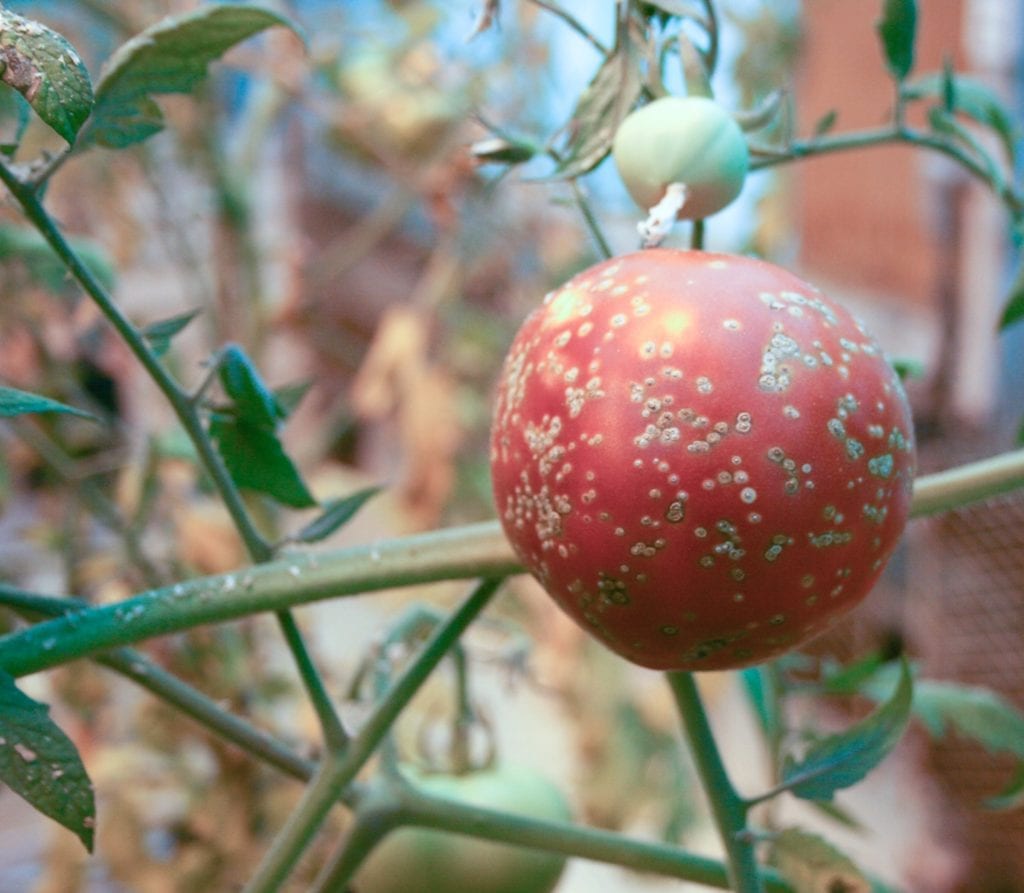Printer-friendly .pdf version of this page.
See also:
- Bacterial canker (LIHREC)
Introduction
Bacterial canker is one of the most devastating bacterial pathogens of tomato worldwide. Like many plant pathogens, Cmm has very erratic disease outbreaks that result in severe epidemics one year followed by relatively little disease the next year. Cmm infections result in wilting, defoliation, desiccation, skin cankers, significantly reduced fruit yield and quality, and ultimately plant death.
Causal Agent
Bacterial canker is caused by Clavibacter michiganensis subsp. michiganensis (Cmm). Cmm enters the tomato through natural openings, wounds (roots, stem, or fruits), or from infected seeds. Once inside a plant, this bacterium multiplies in the cells of plants that are responsible for water transport. A slimy biofilm is produced by the bacteria, which aids in pathogen colonization and movement. If conditions are favorable (77-86 ᵒF), disease symptoms can develop in approximately a week.

Symptoms
Cmm infections produce characteristic symptoms on tomato, however, depending on tomato variety, plant age, and method of production (field vs. greenhouse) the symptoms can vary. For instance, greenhouse-grown tomatoes usually lack the characteristic fruit ‘bird-eye’ lesions that are observed in the field. Greenhouse-grown tomatoes will frequently have scorching or browning on the margins of leaflets, show unilateral wilting (one side of the leaflet becomes wilted), and may have cankers forming on the stems (Below). Many of these symptoms are also observed in the field, with severely scorched leaves and fruit lesions being most common in New York (Below). The bird-eye spots on the fruit are small dark brown lesions that are surrounded by a white halo and may become raised as the symptoms progress.



How the pathogen spreads
The greatest source of Cmm is contaminated seed since bacteria can survive within the seed. The bacterium can also persist on greenhouse benches and floors, debris, and trellising stakes and it can even evade surface sterilization protocols. Fortunately, Cmm is often out-competed by other microbes, preventing the pathogen from surviving long periods in soil or on plant debris. However, asymptomatic tomato seedlings and a variety of weeds can serve as reservoirs for the bacteria.

Management
Use clean seed and transplants
- Make sure you purchase seed and/or transplants from a certified dealer who uses clean seed and performs a rigorous inspection program. Heat treat seeds. Unfortunately, no resistant varieties are available.
Scout plants weekly
- Remove diseased plants and surrounding plants to prevent pathogen spread in the greenhouse or field. Dispose of infected plant material and sterilize all equipment that was used.
- Do not prune or work with plants when they are wet, as workers and equipment can spread Cmm.
Sanitize
- Sanitize all greenhouses, equipment, flats and trellising stakes at the end of the season.
- Plow under infected field debris and rotate out of tomato or pepper for a minimum of 3 years.
Applying chemical treatments
- Copper-based products can help protect healthy plants.
Applying chemical treatments
- Copper-based products can help protect healthy plants.
More information
- For more information, please contact: Chris Smart – cds14@cornell.edu
- This page was created by Martha Sudermann – mas835@cornell.edu


